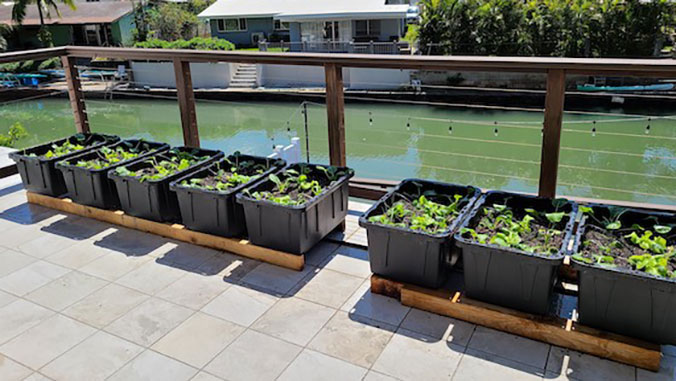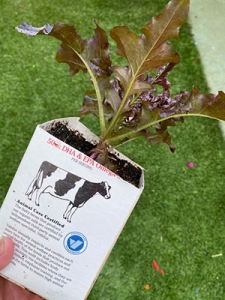
Hawaiʻi is home to the most geographically isolated human population on the planet. With the current COVID-19 pandemic and more than half-a-million housing units packed throughout the islands, containerized vegetable gardening is ideal for small spaces: apartments, condominiums, patios as well as areas with poor soil conditions. With sufficient growing space, soil drainage and aeration, sunlight, adequate nutrients and irrigation, people can grow vegetables quickly—right at home.
University of Hawaiʻi at Mānoa College of Tropical Agriculture and Human Resources Cooperative Extension Service Agents Jari Sugano and Kalani Matsumura offer tips on transforming commonly discarded items into food-producing vegetable gardens.

Pots and root space
Plastic, clay or cement pots are excellent for vegetable and herb production. But in a pinch, many common household items can be used as planting containers—leftover plastic take-out food containers, old gutters or storage tubs. Use a little potting soil and fertilizer, and be sure to cut or drill enough holes for drainage: about a half-inch wide, evenly spaced.
Selecting the right container starts with knowing how much room the roots will need to fully develop. Some crops need more root space, such as cucumber, eggplant, daikon, soybean, ginger, taro, squash, rosemary, ung choy and pepper. They should be planted in large containers—a 3- to 5-gallon bucket with holes drilled in the bottom is great. Medium-size plants, such as green onion, lettuce, spinach, basil, beans, mint, cabbage, kale or radish should be placed in 1½- to 2½-gallon containers. Small herbs like mizuna, chives and parsley can thrive in ½- to 1-gallon containers, like a plastic milk jug with the narrow top cut off. In general, it is better to plant crops in a larger container rather than something too small that might limit the root development.
Soil
Be mindful that containerized vegetables are vulnerable to the same pests and diseases as vegetables grown in the ground. If soil-borne plant diseases are a problem, try using ““soil-less” potting mixes. Another important consideration is fertilization, especially in Hawaiʻi.
For specific questions, visit the UH Master Gardeners website.

